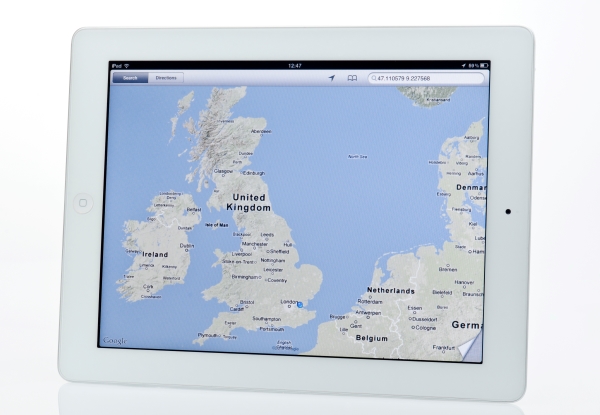
 Since the advent of electricity, the world has witnessed an unprecedented wave of technological advancements, transforming the way we live, work, and communicate. Electronics has been at the forefront of this revolution, giving rise to inventions that have not only revolutionised industries but also changed the fabric of society. From smartphones to smart homes, electronic inventions have touched every aspect of modern life.
Since the advent of electricity, the world has witnessed an unprecedented wave of technological advancements, transforming the way we live, work, and communicate. Electronics has been at the forefront of this revolution, giving rise to inventions that have not only revolutionised industries but also changed the fabric of society. From smartphones to smart homes, electronic inventions have touched every aspect of modern life.
We take a look at the top 10 electronic inventions that have had a profound impact on the world, transforming societies, and shaping the future.
1. The Electronic Computer (1946)
The Electronic Numerical Integrator and Computer (ENIAC) marked a significant time in the history of computing. Developed by John Mauchly and J. Presper Eckert at the University of Pennsylvania, ENIAC was the first general-purpose electronic computer, capable of performing calculations exponentially faster than human computers.
With its debut in 1946, ENIAC reshaped the field of mathematics and paved the way for the development of modern computers. Its impact extended beyond computational tasks, as it demonstrated the potential of electronic machines to augment human capabilities, igniting a technological revolution that would transform industries and aspects of daily life.
2. The Transistor Radio (1954)
As the first commercial transistor radio, it brought portability and convenience to music lovers everywhere. No longer confined to bulky cabinets or reliant on batteries, the TR-1 could fit in a pocket and run off a tiny battery, altering the way people consumed media on the go. Its compact size, affordability, and user-friendliness made it an instant hit among consumers, democratising access to music and news broadcasts. The Regency TR-1’s success set the stage for the development of subsequent portable audio devices, such as Walkman’s and MP3 players.
3. The Video Game Console (1972)
The Magnavox Odyssey was a pioneering device that introduced the concept of home video gaming to the masses. This ground-breaking console utilised interchangeable cartridges, featuring games like Pong and checkers, which could be played on a television set. The Odyssey’s innovative design allowed users to experience entertainment in a whole new way, fostering a nascent industry that would grow to become a global phenomenon. Its impact extends beyond gaming, as it paved the way for future home entertainment systems, such as DVD players and streaming devices. The Odyssey’s release marked the beginning of a new era in which technology and fun merged, changing the way people spent their leisure time.
4. The Cellular Network (1973)
The launch of the first cellular network in Japan transformed the way people communicated, enabling them to make phone calls while on the move. This breakthrough technology, which allowed for wireless communication between mobile devices and base stations, transformed the telecommunications industry and laid the foundation for modern smartphones. With cellular networks, people could stay connected with others regardless of their location, facilitating communication and exchange of information in ways previously unimaginable. The impact of this innovation was immense, as it enabled the development of mobile devices that have become indispensable tools in today’s fast-paced world.

5. The Compact Disc (1980)
The introduction of the compact disc (CD) by Philips and Sony marked a significant shift in the way people consumed music. The CD, which stored digital audio information on a reflective disc, offered several advantages over cassette tapes, including higher sound quality and longer playback time. The CD’s digital format also made it more durable and resistant to wear and tear compared to analogue formats like vinyl records and cassettes. With its ease of use, high sound quality, and ability to store up to 80 minutes of music, the CD quickly gained popularity and eventually replaced cassette tapes as the dominant music format. The CD’s impact went beyond music, as it paved the way for the development of other digital storage formats like DVDs and Blu-ray discs, changing the way we consume and store data.
6. The Smartphone (1992)
The IBM Simon was a ground-breaking device that combined the functions of a phone, fax machine, and personal digital assistant (PDA) into one product. Its touchscreen interface allowed users to navigate through various features, including email, fax, and message capabilities. The Simon was a precursor to modern smartphones, laying the foundation for the advanced handheld devices that are now ubiquitous in our daily lives. With its innovative design and versatile functionality, the Simon marked a significant event in the evolution of mobile technology, setting the stage for smartphones that have become essential tools for communication, work, and entertainment.
7. The Digital Camera (1990)
The introduction of the digital camera in 1990 marked a significant shift in the way people captured and shared memories. Gone were the days of film rolls and waiting for developments, replaced by the convenience and immediacy of digital technology. With the Sony Cyber-shot DSC-1, users could now take pictures, review them instantly, and even delete unwanted shots on the spot. This game-changing device opened up new possibilities for photography, making it easier than ever before to document life’s moments and share them with others. No longer limited by the constraints of film, photographers had a new level of creative freedom, and the world of photography would never be the same again.
8. The Wi-Fi Router (1997)
The invention of the first Wi-Fi router, the Linksys WRT54G, in 1997 marked a significant milestone in the history of computer networking. This device enabled wireless internet connectivity, allowing users to access the internet without being physically tethered to a wired connection. This innovation forever changed the way people accessed the internet in their homes and businesses, providing greater mobility and convenience. With the ability to move around freely while maintaining an internet connection, people could now work, stream media, and communicate wirelessly, which has become an essential part of modern life. The Wi-Fi router has since become a widespread technology, found in nearly every home and office, and has paved the way for the development of many other wireless devices that we use today.

9. The Tablet Computer (2010)
As the first tablet computer, the Apple iPad introduced a new form factor that combined the portability of a smartphone with the functionality of a laptop. With its touchscreen interface, users could easily navigate and interact with content, making it an ideal device for consuming media, browsing the internet, and running apps. The iPad also offered a range of productivity tools, enabling people to work, create, and communicate on the go. Its impact was immediate and profound, changing the way people interact with technology and shaping the future of mobile computing. The success of the iPad inspired a host of competitors, and tablets have since become a popular choice for those seeking a versatile and convenient computing experience.
10. Smart Home Devices (2014)
With devices like Amazon Alexa and Google Home, users can now control various aspects of their home environment, such as lighting, temperature, and appliances, using simple voice commands. These devices have made it easier and more convenient for people to manage their daily routines, improving comfort, efficiency, and convenience. Smart home devices have also enabled new levels of automation, allowing users to program custom scenarios that can be triggered by voice commands or schedules. This technology has opened up new possibilities for homeowners, providing them with a more intuitive and responsive way to interact with their surroundings. As the technology continues to evolve, we can expect to see even more innovative applications of smart home devices in the years to come.
These ten electronic inventions have had a profound impact on society and have transformed the way we live, work, and communicate. From the first computer to the smartphone, these inventions have revolutionised industries and have created new opportunities for innovation and growth. They have also brought people closer together, enabled global communication, and provided access to vast amounts of information at our fingertips. As technology continues to advance, it is exciting to think about what the future holds and how the next generation of electronic inventions will shape the world of tomorrow.

